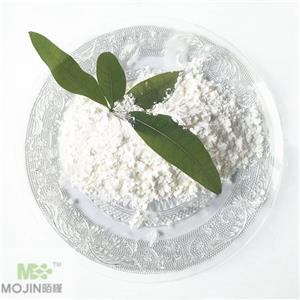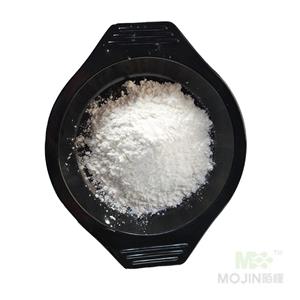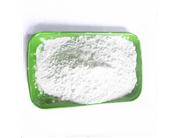| Product Name | 5-Azacytidine |
| CAS No | 320-67-2 |
| EC-No | 206-280-2 |
| Min. Order | 1KG |
| Purity | 99% |
| Supply Ability | 50000KG/month |
| Release date | 2025/02/28 |
| CAS: | 320-67-2 |
| MF: | C8H12N4O5 |
| MW: | 244.2 |
| EINECS: | 206-280-2 |
| Product Categories: | API intermediates;Antitumors for Research and Experimental Use;Biochemistry;Chemical Reagents for Pharmacology Research;Carbohydrates & Derivatives;Inhibitors;Epigenetics;Pyrimidine purine;5-azacytidine, Mylosar, Ladakamycin;CORVATON;Nucleosides and their analogs;Nucleosides, Nucleotides & Related Reagents;Bases & Related Reagents;Nucleotides;320-67-2 |
| Mol File: | 320-67-2.mol |
 | |
| 5-Azacytidine Chemical Properties |
| Melting point | 226-232 °C (dec.)(lit.) |
| alpha | 40 º (C=1, H2O 22 ºC) |
| Boiling point | 387.12°C (rough estimate) |
| density | 1.4287 (rough estimate) |
| refractive index | 1.6590 (estimate) |
| storage temp. | -20°C |
| solubility | Soluble in DMSO (up to 25 mg/ml), or in Water (up to 12 mg/ml). |
| pka | 13.46±0.70(Predicted) |
| form | lyophilized powder |
| color | White to Off-white |
| Water Solubility | 0.5-1.0 g/100 mL at 21 ºC |
| Merck | 14,887 |
| BRN | 620461 |
| Stability: | Stable for 2 years from date of purchase as supplied. Solutions in DMSO or distilled water may be stored at -20° for up to 1 month. |
| InChIKey | NMUSYJAQQFHJEW-WGDKFINWSA-N |
| LogP | -2.191 (est) |
| CAS DataBase Reference | 320-67-2(CAS DataBase Reference) |
| IARC | 2A (Vol. 50) 1990 |
| EPA Substance Registry System | Azacitidine (320-67-2) |
| 5-Azacytidine Usage And Synthesis |
| Description | Azacytidine also referred to as Azacytidine and 5-azacytidine (brand name: Vidaza) is an anti-cancer chemotherapy medication. The drug is classified as demethylation and antimetabolite agent. Azacytidine acts by inhibiting the growth and proliferation of cancer cells in the body. The drug is indicated for the treatment of specific types of blood cell disorders and bone marrow cancers. |
| Indication | Azacytidine is prescribed for treating patients with secondary types of myelodysplastic syndrome, including refractory anemia that presents in the form of ringed sideroblasts (especially if it necessitates transfusion), or it presents itself alongside thrombocytopenia or neutropenia. Also, it is used in treating refractory anemia accompanied by excess blasts, refractory anemia characterized by excess blasts in transition (currently classified as chronic myelogenous leukemia that is accompanied by multilineage dysplasia), and acute myelomonocytic leukemia. |
| Contraindications | Azacytidine is contraindicated in patients who have acute malignant hepatic tumors or known hypersensitivity to the drug or mannitol. |
| Dosage | For treatment of patients with myelodysplastic syndrome, the initial dose is 75mg/m2 administered intravenously or subcutaneously in daily doses for 7 days in 4-week intervals. The recommended maintenance dose may be increased to 100mg/m2 if there are no noteworthy effects after 2 treatment cycles and if the patient does not experience additional toxicity other than vomiting and nausea. Patients should undergo treatment that lasts for a minimum of 4 cycles. However, a partial or complete response may necessitate additional cycles other than the recommended 4 cycles. Treatment should not be discontinued if the patient is experiencing positive outcomes from the therapy. |
| Mechanism of Action | 5-Azacytidine is a chemical analog that is closely linked with the cytosine nucleoside in ribonucleic acid (RNA) and deoxyribonucleic acid (DNA). Azacytidine influences antineoplastic activity through two main mechanisms; suppression of DNA methyltransferase when administered in low doses, which results in hypomethylation of DNA, and unmediated cytotoxicity in anomalous hematopoietic cells present in the bone marrow by its integration into RNA and DNA at high doses which causes the death of the cells. Since Azacytidine is considered a ribonucleoside, it integrates itself into RNA to a greater extent than DNA. The integration into RNA results in the dissimulation of malfunctioning methylation, polyribosomes, and recipient function of replicated RNA, and suppression of protein production. The integration of Azacytidine into DNA results in a covalent bond that is characterized by DNA methyltransferases, which inhibits DNA synthesis and resultant cytotoxicity. |
| Elimination | Intravenous administration of the radioactive form of the drug to cancer patients results in 85% elimination of Azacytidine through urinary excretion. Fecal excretion of the radioactive dose takes place in <1% of the administered drug in 3 days. The mean elimination of radioactivity through urine accounts for 50% of 14C-azacytidine administration. |
| Adverse reactions | Common side effects associated with Azacytidine in more than 30% of the patients include low white blood cell count, fever, vomiting, low platelet count, anemia, and nausea. At nadir, 10-17days of chemotherapy cycles, one may also experience petechiae, ecchymosis, constipation, redness at the injection site and fatigue. Other side effects associated with Azacytidine in about 10-29% of the patients may include insomnia, depression, itching, upper respiratory infection, hypokalemia, anxiety, skin rash, abdominal pain, weight loss, nosebleed, chest pain, swelling on the ankles, dizziness, confusion, back pain, sore throat, poor appetite, headache, myalgia and arthralgia, pain at the injection site, chills, weakness, shortness of breath and coughs. It is important to contact health care provider if one is experiencing diarrhea (4-6 episodes in 24 hours). A patient should also contact the doctor in case he/she has nausea that interferes with their ability to eat. If one has bloodstained urine, constipation that persists regardless of laxative use, extreme fatigue, tarry or bloodstained stools, vomiting (4-5 episodes in a span of 24 hours), signs of infection such as productive coughs or painful urination, and inability to eat or take fluids for more than 24 hours. |
| Precautions | A patient should notify their healthcare provider if they are taking any other medications which may include herbal remedies, vitamins, and over-the-counter medications before receiving an Azacytidine prescription. A patient should not receive any vaccination or immunization while they are on Azacytidine treatment. Breastfeeding is not recommended while one is taking this drug. A patient should also inform their healthcare provider if they are pregnant or intending to get pregnant before starting Azacytidine treatment. Azacytidine may cause neutropenia, anemia, and thrombocytopenia. Since the drug may result in hepatotoxicity amongst patients with acute hepatic impairment, caution should be taken during the administration of Azacytidine in patients with liver disease. Renal toxicity that may range from renal failure to increased serum creatinine and death has been reported amongst patients who have been accorded intravenous treatment with Azacytidine in combination treatment with other chemotherapeutic medications for nonMDS cases. The drug may also result in acute tumor lysis syndrome for patients with MDS. Azacytidine poses a threat to a developing embryo/fetus based on its mechanism of action. |
| Description | 5-Azacytidine is an analog of the nucleoside cytidine which can be incorporated into DNA and RNA. 5-Azacytidine acts as an epigenetic modifier by incorporating into DNA where it irreversibly binds to DNA methyltransferases, thus inhibiting their activity. Azacitidine is an antineoplastic agent launched for the treatment of myelodysplastic syndrome (MDS). MDS is a group of closely related diseases caused by abnormal blood-forming stem cells of the bone marrow. Azacitidine is indicated for the treatment of all five subtypes of MDS, which consist of refractory anemia, refractory anemia with ringed sideroblasts, refractory anemia with excess blasts, refractory anemia with excess blasts in transformation, and chronic myelomonocytic leukemia. |
| Chemical Properties | White crystalline solid or powder. Soluble in dimethyl sulfoxide, slightly soluble in ethanol:water (50:50), propylene glycol, polyethylene glycol; slightly soluble in water, saturated octanol aqueous solution, 5% glucose injection, N-methyl-2-pyrrolidone, 0.9% sodium chloride injection and 5% polysorbate 80 aqueous solution; insoluble in acetone, ethanol and methyl ethyl ketone. |
| Originator | Pharmion (US) |
| Uses | antianginal |
| Uses | Antineoplastic;'Antimetabolite |
| Uses | 5-Azacytidine, its incorporation into RNA alters RNA synthesis and processing, and results in inhibition of protein synthesis. It has been used as a cancer chemotherapeutic agent. It is a powerful bacteriostatic, antitumor, and mutagenic agent; it also exhibits immunosuppressive, antimitotic, radioprotective, and virostatic effects. |
| Uses | A potent growth inhibitor and cytotoxic agent. It acts as a demethylating agent by inhibiting DNA methyltransferase |
| Definition | ChEBI: A N-glycosyl-1,3,5-triazine that is 4-amino-1,3,5-triazin-2(1H)-one substituted by a beta-D-ribofuranosyl residue via a N-glycosidic linkage. |
Packing &shipping&Payment
Shipping:by sea or by air
Payment:T/T,western union,moneygram
Packaging Details drum
Port:Tianjin
Lead Time :
| Quantity(Kilograms) | 1 - 10000 | >10000 |
| Est. Time(days) | 5 | To be negotiated |

 Company information
Company information
Hebei Mojin Biotechnology Co., Ltd, Our company is a professional in 4'-Methylacetophenone,Levamisole hydrochloride ,N-Methylformamide and other chemical reagents research and development production enterprises. Our business covers more than 30 countries, most of the big customers come from Europe, America and other countries in the world, we can guarantee the quality and price. In recent decades, with the efforts of all employees, we have established many cooperative companies in shandong, henan, guangdong and other places. Our corporate purpose is based on the market, enhance the strength, take the road of scientific and environmental sustainable development, relying on the country. Technology r & d center, increase the investment in r & d, based on the domestic market, expand the international market, manufacturing quality products, sincere service to the society, into a modern, ecological, scientific and technological enterprise world.
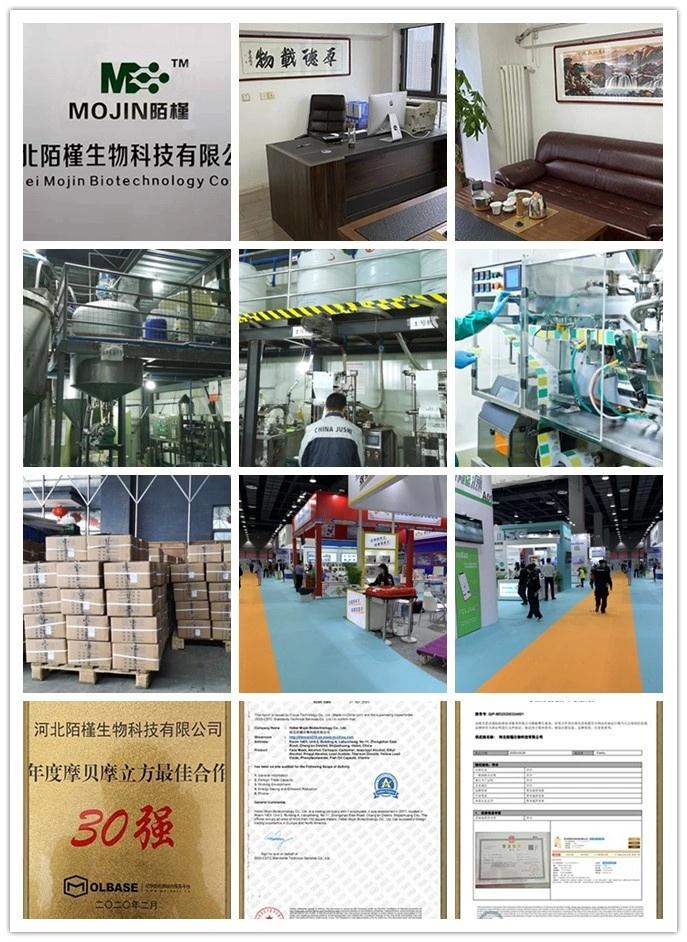 Advantage
Advantage
In stock
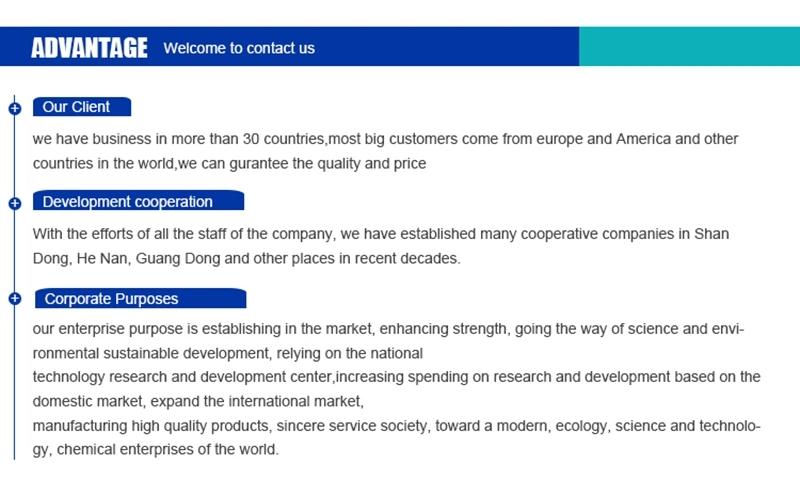
Company Profile Introduction
-
